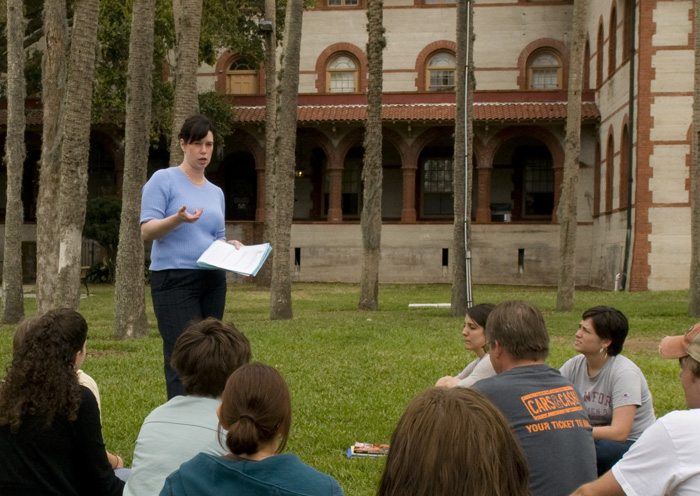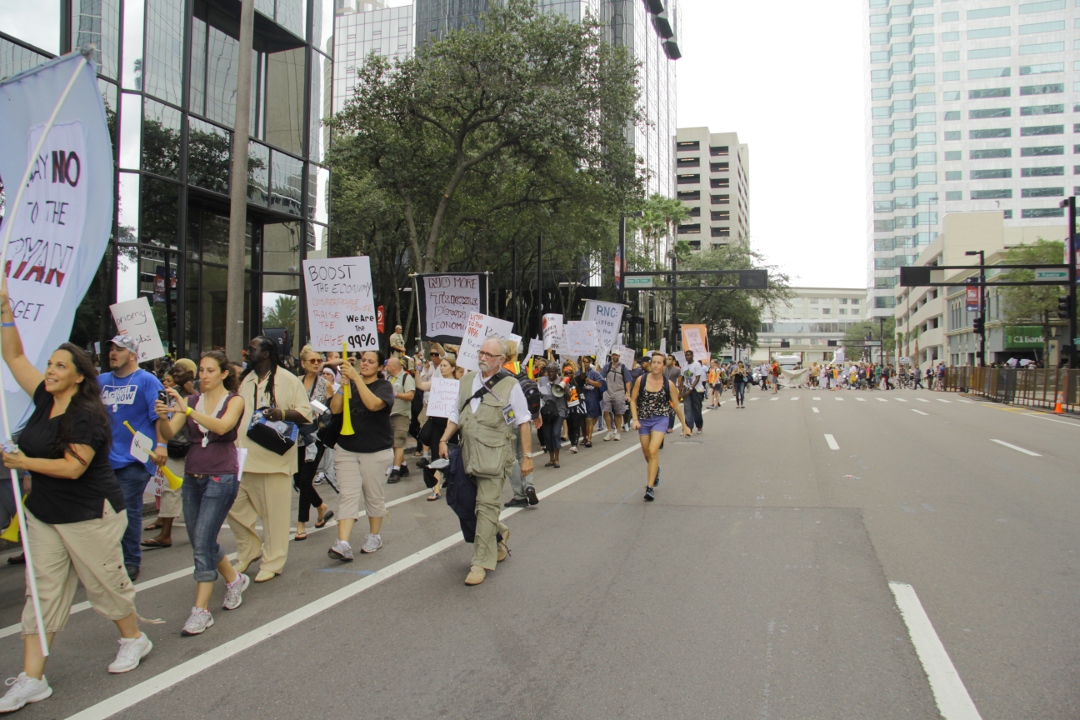By Taylor Long | gargoyle@flagler.edu
Okaloosa County Deputy Sheriff Bill Myers had just dropped off a domestic violence injunction at a lawyer’s office in Shalimar, Florida, when a man came from behind and shot him in the back and head.
Meyers, 64, was killed. The gunman fled to a nearby hotel and barricaded himself in a room, deputies say. The sheriff’s Special Response Team shot and killed the suspect after he came out of the room with a firearm.
The episode, which occurred on Sept. 22 near the city of Pensacola, Florida, is one of a string of killings of law enforcement officers in the United States.
“Recently it seems there has been more focus on violence towards police,” said Tina Jaeckle, an associate professor at Flagler College in St. Augustine, Florida. “The manner in which the officers are being killed is more shocking and brazen.”
Another deputy was shot and killed in Texas earlier this year. On Aug. 28, Harris County Sheriff’s Deputy Darren Goforth was killed while he fueled his patrol car in the Houston area.
Harris County Sheriff Ron Hickman told CNN that Goforth “was literally gunned down in what appears to be an unprovoked, execution-style killing, I have been in law enforcement for 45 years, I have never seen anything this cold-blooded.”

Deputy Darren Goforth, left, and Shannon J. Miles, accused of killing the deputy. Photo: Harris County Sheriffs Office.
Jaeckle, who directs the criminology program at Flagler College, says there is a growing divide between law enforcement and residents who live in high-crime communities. That “us vs. them” mentality raises the potential for attacks on police, she says.
According to Mapping Police Violence, a website dedicated to tracking police violence, at least 248 black people were killed by police in 2015. The site said black people were three times more likely to be killed by police than white people.
In 2014, the site said, four of seven people killed by police in Jacksonville, Florida, were black and one was unarmed. The rate of blacks killed in Jacksonville was higher than it was in Orlando, Hialeah, Miami and Tampa.
The Washington Post and ABC News conducted a poll in December 2014 to explore American society’s view of the criminal justice system.
The Post-ABC poll suggests “only about two in 10 African Americans say they are confident that the police treat whites and blacks equally, whether or not they have committed a crime.”
According to Officer Down Memorial, line-of-duty deaths are down by 2 percent over 2014. Officer deaths related to gunfire are down 26 percent compared to 2014. Even though the numbers are lower, Jaeckle says officers are on edge. Recent killings remind officers of the danger they face on the streets.
“Officers are more selective about where they stop to write reports, get some coffee or have dinner. We are more likely to coordinate with other officers to meet together, not only for camaraderie, but for safety,” says Jeffrey McGill, training center coordinator for criminal justice at Northwest Florida State College.
Jaeckle says that trying to build trust for police officers in the high-crime communities where it is lacking could help reduce violence. But McGill says community-policing policies have been abandoned because they require extensive time to build relationships and with manpower shortages answering calls is the only focus.
McGill says, “The ideal plan to me would be two officers per car. This allows one to consistently provide over watch while patrolling. Statistics show that when more than one officer is present the level of potential violence declines because the criminal realizes the potential for success is much smaller. Fiscally this would be a huge challenge but this is likely the future of law enforcement.”
Both Jaeckle and McGill believe that media reports about police violence toward residents fuels violence toward law enforcement officers. One way to help protect law enforcement officers is to change how the public perceives them. For some people, the only source of information about what law enforcement officers are doing comes from broadcast television news, newspapers or online news sources. The officers’ personal experiences are often not heard.
McGill says, “The media has a huge influence on public perception of officers in the community.”
Jaeckle says, “This idea is called the contagion effect,” meaning people prone to violence imitate violent actions that seem attractive to them when popularized by mass media.
McGill also says, “Media portrayal, much like statistics, can be skewed to show law enforcement in a bad light. I’m not foolish enough to suggest the cops never do anything wrong. What I am stating is the media often provides partial or incorrect information to the public allowing them to make decisions without complete information.”
According to a study by the National Institute of Justice, “Media accounts of police misconduct also influence perceptions of police, but less so than personal interactions.” The study concludes that African Americans who live in high-crime areas and hear others talk about police misconduct are especially likely to believe it is common.








Be the first to comment on "Attacks on police stir debate"